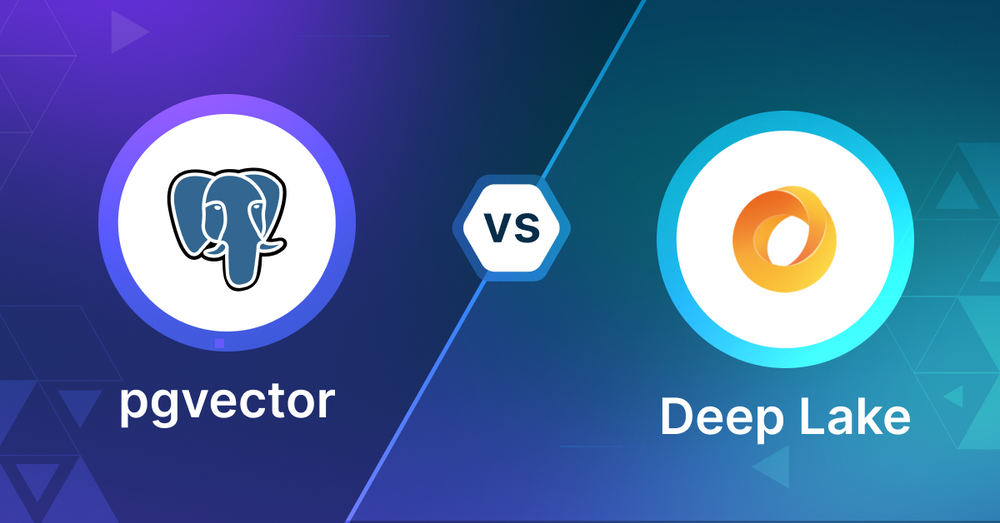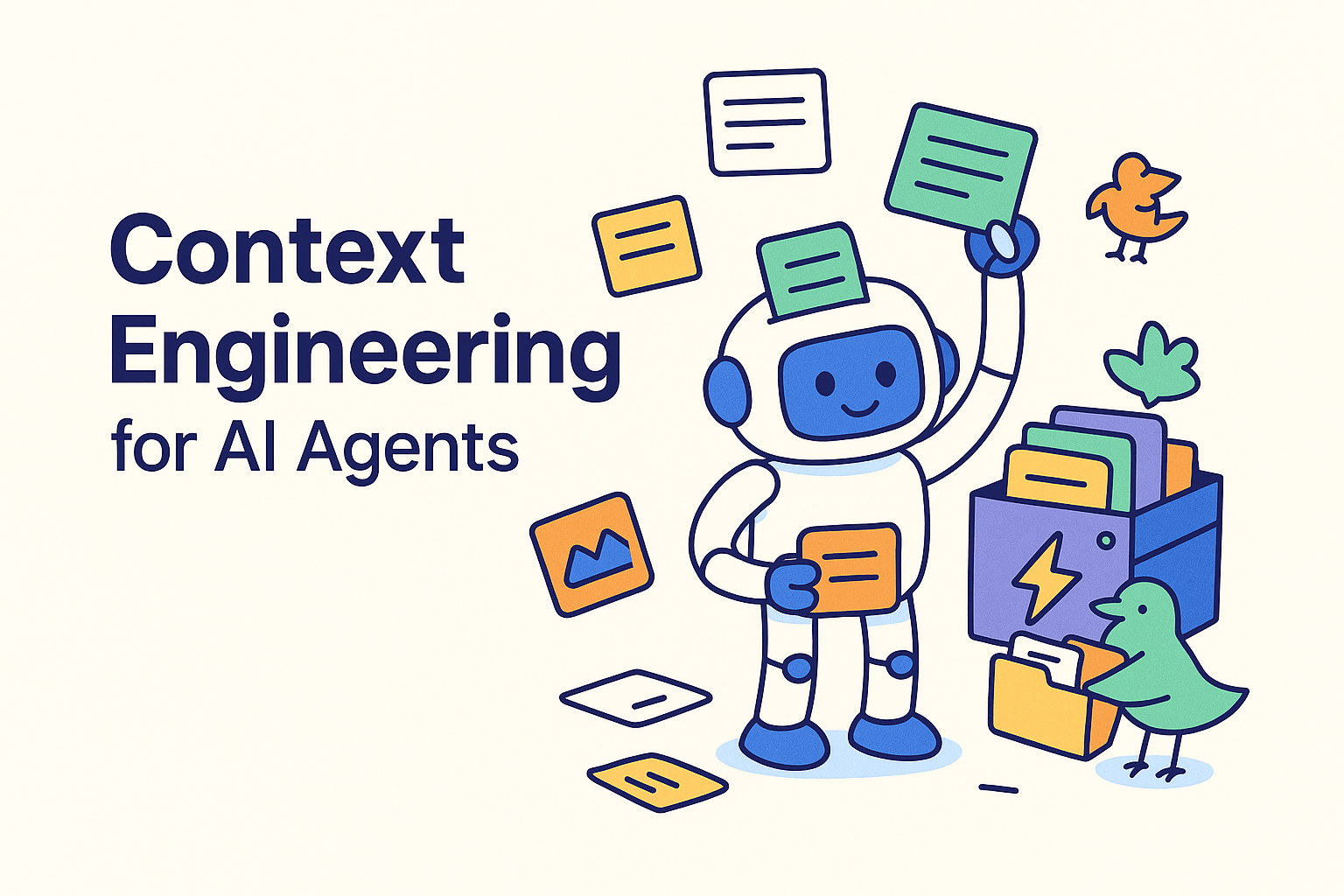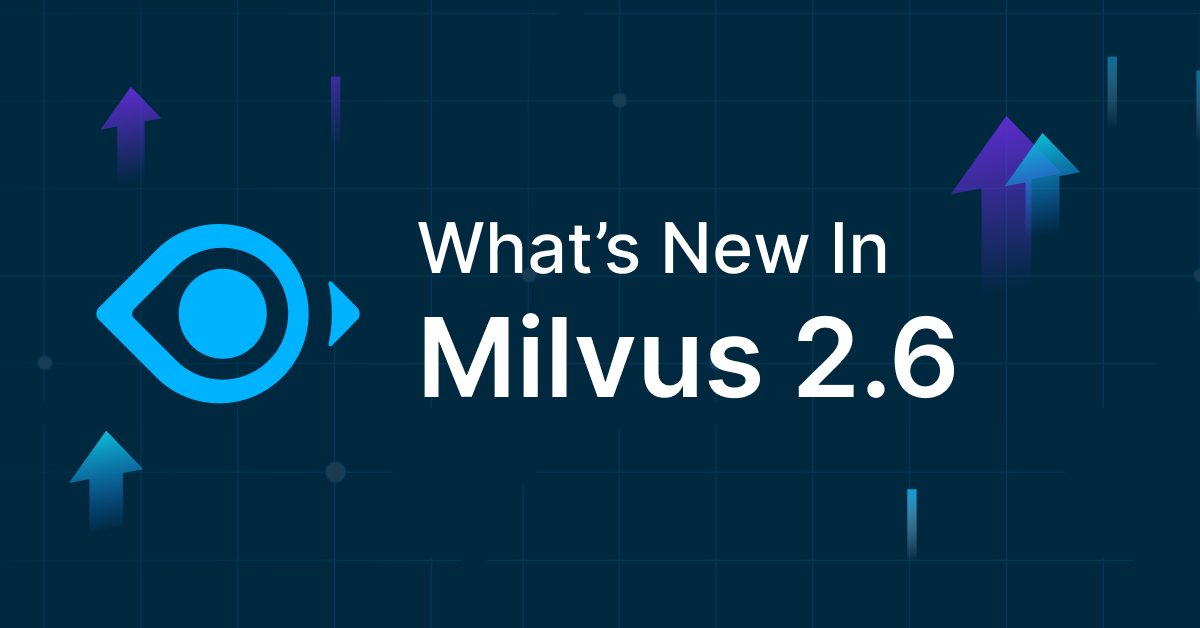pgvector vs Deeplake: Choosing the Right Vector Database for Your AI Apps

What is a Vector Database?
Before we compare pgvector and Deeplake, let's first explore the concept of vector databases.
A vector database is specifically designed to store and query high-dimensional vectors, which are numerical representations of unstructured data. These vectors encode complex information, such as the semantic meaning of text, the visual features of images, or product attributes. By enabling efficient similarity searches, vector databases play a pivotal role in AI applications, allowing for more advanced data analysis and retrieval.
Common use cases for vector databases include e-commerce product recommendations, content discovery platforms, anomaly detection in cybersecurity, medical image analysis, and natural language processing (NLP) tasks. They also play a crucial role in Retrieval Augmented Generation (RAG), a technique that enhances the performance of large language models (LLMs) by providing external knowledge to reduce issues like AI hallucinations.
There are many types of vector databases available in the market, including:
- Purpose-built vector databases such as Milvus, Zilliz Cloud (fully managed Milvus)
- Vector search libraries such as Faiss and Annoy.
- Lightweight vector databases such as Chroma and Milvus Lite.
- Traditional databases with vector search add-ons capable of performing small-scale vector searches.
pgvector is a traditional database with vector search capabilities as an add-on and Deep Lake is a data lake optimized for vector embeddings. This post compares their vector search capabilities.
pgvector: Overview and Core Technology
pgvector is an extension for PostgreSQL that adds support for vector operations. It allows users to store and query vector embeddings directly within their PostgreSQL database, providing vector similarity search capabilities without the need for a separate vector database.
Key features of pgvector include:
- Support for exact and approximate nearest neighbor search
- Integration with PostgreSQL's indexing mechanisms
- Ability to perform vector operations like addition and subtraction
- Support for various distance metrics (Euclidean, cosine, inner product)
pgvector, by default, employs exact nearest neighbor search, which guarantees perfect recall but can be slower for large datasets. To optimize performance, pgvector offers the option to create indexes for approximate nearest neighbor search. This approach trades some accuracy for significantly improved speed, which is often a worthwhile tradeoff in many real-world applications.
It's important to note that adding an approximate index can change the results of your queries. This is different from typical database indexes, which don't affect the actual results returned. The two types of approximate indexes supported by pgvector are:
- HNSW (Hierarchical Navigable Small World): Introduced in pgvector version 0.5.0, HNSW is known for its high performance and quality of results. It builds a multi-layer graph structure that allows for fast traversal during searches.
- IVFFlat (Inverted File Flat): This method divides the vector space into clusters. During a search, it first identifies the most relevant clusters and then performs an exact search within those clusters. This can significantly speed up searches in large datasets.
The choice between these index types depends on your specific use case, considering factors like dataset size, required query speed, and acceptable trade-off in accuracy. HNSW generally offers better performance but may use more memory, while IVFFlat can be more memory-efficient but might be slightly slower or less accurate in some cases.
When implementing pgvector in your project, try to experiment with both index types and their parameters to find the optimal configuration for your specific needs. This process of fine-tuning can impact the performance and accuracy of your vector search operations.
Wanna learn how to get started using pgvector? Check out this tutorial!
What is Deep Lake? An Overview
Deep Lake is a specialized database system designed to handle the storage, management, and querying of vector and multimedia data, such as images, audio, video, and other unstructured data types, which are increasingly used in AI and machine learning applications. Deep Lake can be used as a data lake and a vector store:
Deep Lake as a Data Lake: Deep Lake enables efficient storage and organization of unstructured data, such as images, audio, videos, text, medical imaging formats like NIfTI, and metadata, in a version-controlled format designed to enhance deep learning performance. It allows users to quickly query and visualize their datasets, facilitating the creation of high-quality training sets.
Deep Lake as a Vector Store: Deep Lake provides a robust solution for storing and searching vector embeddings and their associated metadata, including text, JSON, images, audio, and video files. You can store data locally, in your preferred cloud environment, or on Deep Lake's managed storage. Deep Lake also offers seamless integration with tools like LangChain and LlamaIndex, allowing developers to easily build Retrieval Augmented Generation (RAG) applications.
Key Differences
Search Methodology:
pgvector uses exact and approximate nearest neighbor search algorithms. It supports HNSW and IVFFlat indexes for approximate search. Deep Lake employs various search algorithms optimized for vector and multimedia data.
Data Handling:
pgvector works with vector embeddings within PostgreSQL. It's best for structured data and vector representations. Deep Lake handles diverse data types including images, audio, video, and text. It excels with unstructured and semi-structured data.
Scalability and Performance:
pgvector leverages PostgreSQL's scalability features. Performance may decrease with very large datasets. Deep Lake is built for large-scale data and offers distributed storage options for improved performance.
Flexibility and Customization:
pgvector allows customization within PostgreSQL's framework. You can use SQL for queries and PostgreSQL features. Deep Lake offers more flexibility for multimedia data. It supports custom data models and query types for various data formats.
Integration and Ecosystem:
pgvector integrates seamlessly with PostgreSQL-based applications. Deep Lake works well with AI/ML tools like LangChain and LlamaIndex. It supports cloud storage integration.
Ease of Use:
pgvector is straightforward for those familiar with PostgreSQL. It has a moderate learning curve for vector operations. Deep Lake may require more setup but offers tools for data visualization and management.
Cost Considerations:
pgvector runs on existing PostgreSQL infrastructure, potentially lowering costs. Deep Lake may have higher operational costs due to its specialized features. It offers both self-hosted and managed options.
Security Features:
pgvector inherits PostgreSQL's security features including access control and encryption. Deep Lake provides security measures for cloud storage and data access. Specific features may vary based on deployment.
When to Choose Each Technology:
Choose pgvector when you have an existing PostgreSQL database and need to add vector search capabilities for structured data. It's ideal for projects that require seamless integration with PostgreSQL-based systems and for moderate-sized datasets where fast, accurate vector search within the database is crucial. Opt for Deep Lake when working with diverse data types, especially unstructured data like images, audio, and video. It's best suited for machine learning workflows that need efficient storage and retrieval of large multimedia datasets, and for applications requiring advanced vector search capabilities in AI contexts.
Conclusion:
pgvector excels in adding vector search to PostgreSQL databases, offering solid performance for vector operations within a familiar SQL environment. Deep Lake stands out for its ability to handle diverse data types and provides specialized features for AI and machine learning workflows. Your choice should depend on your specific needs, including current infrastructure, data types, scale of vector search requirements, and need for specialized AI features. Consider your team's expertise and the learning curve for each technology. Ultimately, pgvector is ideal for PostgreSQL-based systems needing vector capabilities, while Deep Lake shines in dedicated vector storage and search for AI-focused applications, especially those dealing with multimedia data.
While this article provides an overview of pgvector and Deeplake, it's key to evaluate these databases based on your specific use case. One tool that can assist in this process is VectorDBBench, an open-source benchmarking tool designed for comparing vector database performance. Ultimately, thorough benchmarking with specific datasets and query patterns will be essential in making an informed decision between these two powerful, yet distinct, approaches to vector search in distributed database systems.
Using Open-source VectorDBBench to Evaluate and Compare Vector Databases on Your Own
VectorDBBench is an open-source benchmarking tool designed for users who require high-performance data storage and retrieval systems, particularly vector databases. This tool allows users to test and compare the performance of different vector database systems such as Milvus and Zilliz Cloud (the managed Milvus) using their own datasets and determine the most suitable one for their use cases. Using VectorDBBench, users can make informed decisions based on the actual vector database performance rather than relying on marketing claims or anecdotal evidence.
VectorDBBench is written in Python and licensed under the MIT open-source license, meaning anyone can freely use, modify, and distribute it. The tool is actively maintained by a community of developers committed to improving its features and performance.
Download VectorDBBench from its GitHub repository to reproduce our benchmark results or obtain performance results on your own datasets.
Take a quick look at the performance of mainstream vector databases on the VectorDBBench Leaderboard.
Read the following blogs to learn more about vector database evaluation.
Further Resources about VectorDB, GenAI, and ML
- What is a Vector Database?
- pgvector: Overview and Core Technology
- What is Deep Lake? An Overview
- Key Differences
- When to Choose Each Technology:
- Conclusion:
- Using Open-source VectorDBBench to Evaluate and Compare Vector Databases on Your Own
- Further Resources about VectorDB, GenAI, and ML
Content
Start Free, Scale Easily
Try the fully-managed vector database built for your GenAI applications.
Try Zilliz Cloud for FreeKeep Reading

Context Engineering Strategies for AI Agents: A Developer’s Guide
Learn practical context engineering strategies for AI agents. Explore frameworks, tools, and techniques to improve reliability, efficiency, and cost.

Democratizing AI: Making Vector Search Powerful and Affordable
Zilliz democratizes AI vector search with Milvus 2.6 and Zilliz Cloud for powerful, affordable scalability, cutting costs in infrastructure, operations, and development.

The Great AI Agent Protocol Race: Function Calling vs. MCP vs. A2A
Compare Function Calling, MCP, and A2A protocols for AI agents. Learn which standard best fits your development needs and future-proof your applications.
The Definitive Guide to Choosing a Vector Database
Overwhelmed by all the options? Learn key features to look for & how to evaluate with your own data. Choose with confidence.